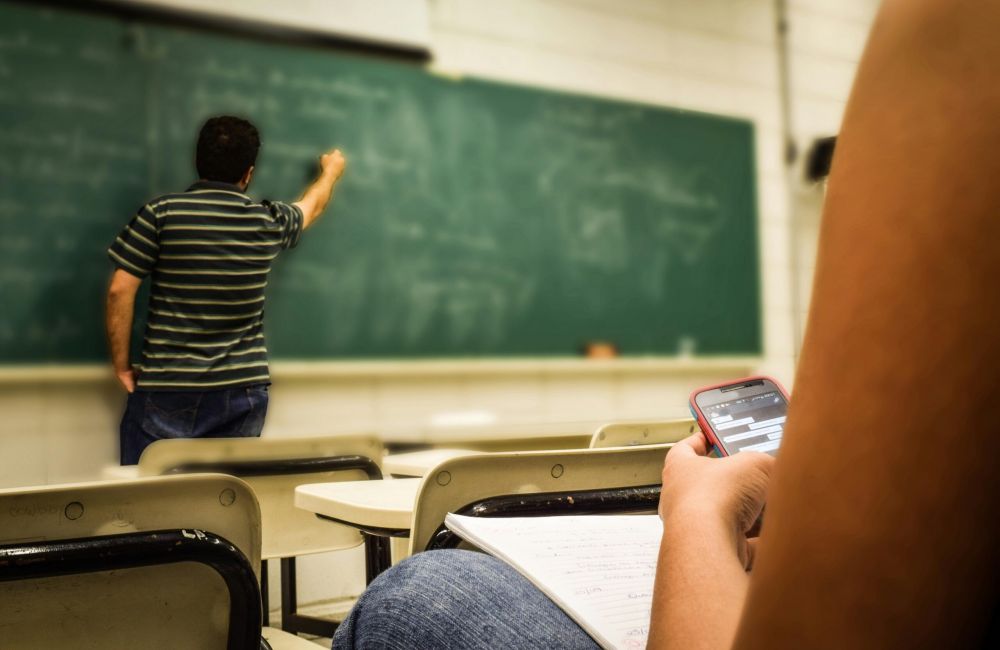New York just banned student cell phone use during the school day.
Here’s what educators – and parents – need to know, and how schools can turn policy into opportunity.
New York recently passed a law aimed at creating distraction-free schools by banning student use of smart phones and other internet-enabled devices during the school day. Starting this coming school year, 2025-26, all public schools in the State must enforce bell-to-bell restrictions on personal devices in and out of class.
Governor Kathy Hochul even launched a new website with resources, such as policy examples, FAQs, and toolkits, to help schools implement this ban.
Let’s break down what Education Law § 2803 does, who it covers, what schools need to do, and how to handle some challenges that may arise.
Overview of the New Law
Under the new law, students are prohibited from using internet-enabled devices during the entire school day on school grounds. Put simply, from the first bell to the last, students shouldn’t be texting, scrolling social media, or otherwise online on personal devices while at school. In general, they can’t even receive calls on the phone, even from Mom or Dad.
The law defines internet-enabled devices broadly – think smart phones, tablets, smart watches, and any gadget that can connect to the internet. Notably, basic cell phones without internet capability, or school-issued devices used for class, are not included in the ban.
The goal is to eliminate distractions and keep students engaged in learning. The statewide standard for distraction-free schools was approved in May 2025 and takes effect the 2025-2026 school year.
Schools Covered by the Ban
The ban applies to all New York public schools, including traditional public school districts, charter schools, and Board of Cooperative Educational Services (BOCES) programs. In other words, every public elementary, middle, and high school in the State must implement a policy in compliance with section 2803.
Private or parochial schools are not explicitly covered by the law, so they’re not required to adopt the ban, though they could choose similar policies voluntarily.
Public school administrators, faculty, and staff should be aware that this is now a statewide mandate – it’s not optional if you’re in a public school setting.
Obligations Under the New Law
To ensure compliance, the law lays out several clear requirements for schools.
The ban covers the entire instructional day, from the first bell to the last, including periods like lunch, recess, study hall, and hallway transitions. It applies not just inside the classroom but across the entire school property, including outdoor fields and playgrounds.
By August 1, 2025, schools are required to adopt a written policy that reflects these requirements and restrictions. The policy must be developed in consultation with unions, parents, and students and must include key components to ensure functionality and fairness.
Among the components are requirements to provide at least one method for parents or guardians to get in touch with their children during the school day. It also requires schools to offer secure on-site storage for student devices, for example, lockers.
Policies also must be published online and translated on request into the most spoken non-English languages in New York.
In addition to key requirements, there are also built-in exceptions where students may use devices:
- if authorized by staff for an educational purpose;
- when necessary for managing a health condition;
- in emergencies;
- for translation assistance,
- if a student is a caregiver and has been granted permission by a school counselor or psychologist; and
- if a student’s individualized education program (IEP) or section 504 plan allows device use.
Challenges to Enforcing the Ban
Implementation won’t be without its challenges. Change is difficult, after all.
For instance, some parents may be wary of losing direct contact with their children during the day. Consequently, it’s important to communicate the new contact methods upfront.
One option is for schools to allow parents to call the main office for urgent messages. Schools also should emphasize the policy is about removing distractions – not cutting off communication with Mom or Dad or a caregiver.
Besides pushback from parents, students may be reluctant to give up devices they’ve become accustomed to having at their fingertips. And, importantly, the law says that schools can’t suspend students based solely on violating the written policy.
So schools need to clearly communicate substitute contact methods and ensure consistent enforcement.
Finally, arguably to prevent inequitable enforcement, schools now are required to publish annual reports on discipline, including demographic breakdowns and mitigation plans if disparities are found. The annual reports don’t begin until 2026, however.
More Details on Exceptions
For health-related allowances or caregiver exceptions, make sure there’s a clear process for students to request permission and for staff to verify the need, e.g., a note from a health care provider. School nurses and counselors should be looped in so that a student who justifiably needs a device isn’t mistakenly disciplined.
It’s wise to train all staff on the allowable exceptions. For instance, a hall monitor should know that a student using a translation app or checking an insulin monitor isn’t breaking the rules. Practical issues, like how and where to store the devices, require thoughtful planning.
New York’s cellphone ban is a significant shift in how schools handle personal technology, but it offers an opportunity to reinforce focus, equity, and healthier learning environments. With early planning and thoughtful engagement, administrators, teachers, and staff can turn this mandate into a positive change for their schools.
Questions or Concerns
If you have any questions regarding New York’s new law, or if you have any other concerns, don’t hesitate to contact our office at (716) 839-9700, or email us at info@coppolalegal.com.

